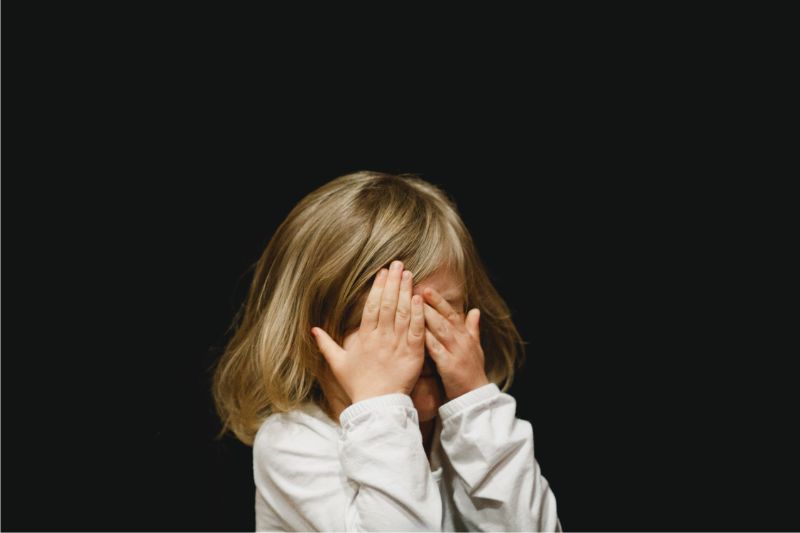No products in the cart.
Understanding Types of Child Abuse and What You Can Do

Child abuse is a heartbreaking issue affecting millions of children worldwide. It can take many forms, including physical and emotional. These acts of violence and harm devastate victims’ long-term health, safety, and well-being. Unfortunately, child abuse often goes unnoticed until it’s too late to intervene — which is why we all need to be aware of the signs so we can act quickly if required. This article will explore different types of child abuse and explain what you can do to help protect vulnerable kids from harm.
Types of Child Abuse
Physical Abuse: Physical abuse is any intentional act of violence or injury that causes bodily harm to a child. Examples include hitting, biting, shaking, throwing, and burning. It is important to remember that even if the abuser believes they are “disciplining” the child, it still constitutes abuse.
Emotional Abuse: Emotional abuse can include verbal or emotional threats, insults, humiliation, or belittling of the child. It can also involve isolating a child from their peers, not letting them participate in activities they enjoy, or controlling their behavior with harsh punishment.
Sexual Abuse: Sexual abuse includes unwanted sexual contact from an adult to a child, such as touching, fondling, or forcing the child to engage in sexual activity. It also includes exposing a child to pornography or inappropriate material and making sexually suggestive comments about a child.
Neglect: This abuse involves neglecting a child’s basic needs for food, shelter, medical care, and education. Negligence can also include failing to supervise a child or leaving a child in an unsafe environment.
Exploitation: Exploitation of a child involves taking advantage of them for the abuser’s gain without their consent. Examples include:
- Forcing them to work or sell drugs.
- Using them as unpaid servants.
- Coercing them into prostitution.
What You Can Do To Help
If you suspect a child is being abused, taking action immediately is important. Here are some steps you can take to help protect them:
1. Report Your Suspicions
The first step in helping protect a kid from abuse is to report any suspicions of abuse to the appropriate authorities. This means contacting your local child protective services agency or law enforcement if the abuse is criminal. Consider hiring a Houston sexual abuse lawyer to help you with the process if the child abuse is sexual. It’s important to act quickly, as any delay could put a child’s safety at risk. When reporting your suspicions, provide as much information as possible and explain why you believe the child is in danger.
2. Listen to and Support the Child
Listening to and supporting the child is critical in helping them cope with the trauma of abuse. When talking to a child, it’s important to allow them to express their feelings without judgment or criticism. Take the time to listen without trying to “fix” or offer solutions. Respond with empathy and create a safe, trusting environment for the child to talk. Acknowledge their feelings and never dismiss them.
4. Get Professional Help
If you’re concerned about a child, it’s important to get professional help immediately. This means seeking out counseling and other services to support and assist the child and their family. If a child is in immediate danger, call 911. After that, it’s important to seek professional help for both the child and the abuser. A mental health professional can provide therapy and counseling to help the child and abuser work through any emotional trauma the abuse may have caused.
5. Educate Yourself and Others
Educating yourself and others on the signs of child abuse is an important way to help protect vulnerable children from harm. You can do this by spreading awareness of what constitutes child abuse and recognizing the warning signs. Forming relationships with organizations that specialize in helping abused children is also beneficial. This can include volunteering with organizations such as child protection agencies, counseling centers, and crisis response teams. By staying informed and educating others on the issue of child abuse, you can help ensure no child has to suffer in silence.
6. Advocate for Changes in the System
It’s also important to advocate for changes in the system that will help protect children from abuse. This could mean advocating for more robust laws, improved services, and resources, or better funding for organizations that work with abused children. It could also mean pushing for policy changes at a local or national level. By taking a stand and advocating for change, you can help ensure vulnerable children get the protection they deserve.
Child abuse is a serious problem affecting millions of children worldwide. By understanding the different types of abuse, recognizing the warning signs, reporting your suspicions, and taking action to help protect vulnerable children, we can all do our part in making sure no child has to suffer in silence. No matter how small your effort is, it can make a big difference in the life of an abused child.










Leave a Reply